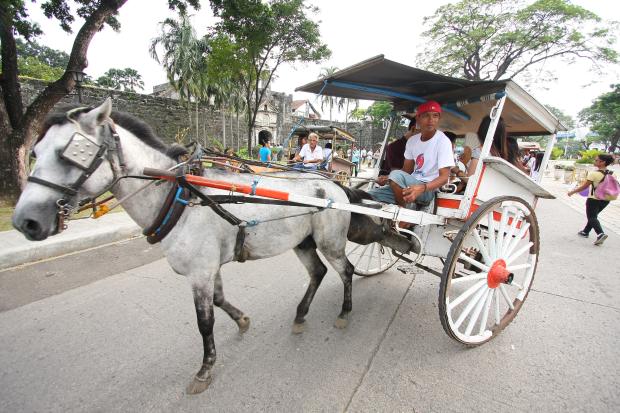Before jeepneys began to lord it over Cebu City’s streets, horse-drawn carriages or tartanillas were the main mode of transportation.
Considered the “king of the road” during the Spanish occupation and before motorized vehicles were introduced after World War II, the tartanilla played a big part in the lives of Cebuanos and by extension, in Cebu City’s culture and heritage.
Seen nowadays only in a few parts of the city, the tartanilla will take center stage on May 30 during the “Gabii sa Kabilin”, an annual open house of the city’s museums and heritage sites from 6 p.m. to midnight.
A parade of colorful tartanillas is included in the evening of heritage tours. Some of the carriages bear parts that date back to the Spanish era.
(Those who purchase all-access tickets at P150 for visitors to to enter any museum on May 30 will also get a ticket to ride the tartanilla in selected routes)
Organizers have also picked the tartanilla as the image in the official logo of the “Gabii sa Kabilin.”
The event would be a venue for Richie Dasmariñas, a tartanilla operator from barangay Pardo, to showcase his pride.
He said the tartanilla that we see today is similar to the one used in the 1930s, although bigger. Pre-war carriages could sit only two passengers while present-day tartanillas running along the city’s street have a capacity of five persons.
The number of tartanilla makers in Cebu has since dwindled, said Charlie Abellanosa, who learned the craft from his grandfather and father.
There used to be tartanilla shops in Bulacao, Duljo and Mabolo in Cebu City as well as some in Mandaue City. Only those from Pardo and Duljo remain.
As the use and manufacture of tartanillas have become a rarity in Cebu, operators have no choice but to recycle carriage parts, some of which date back to the Spanish period.
Dasmariñas said he sees no problem with this because metal parts manufactured in the past decades were of top quality.
The horse-drawn carriages were not just for ferrying passengers or cargoes. They were also used for races during fiestas.
They usually bear the trademark of their makers, such as the image of a sunburst that Dasmariñas has carved on his tartanilla.
